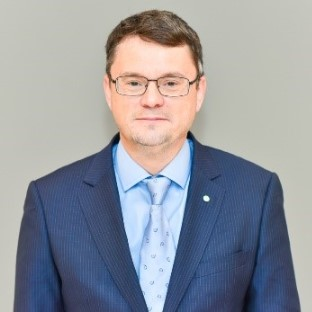Powder Materials for Modern Technological Processes: Application, Production, and Properties
A special issue of Coatings (ISSN 2079-6412). This special issue belongs to the section "Surface Characterization, Deposition and Modification".
Deadline for manuscript submissions: closed (18 December 2021) | Viewed by 6013
Special Issue Editors
Interests: hybrid manufacturing technology; additive manufacturing; multimaterials; selective laser melting; laser powder bed fusion; surface modification of metal powders; metallurgy of the light metals; powder metallurgy; chemical synthesis; electrolysis; metal matrix composites
Interests: additive manufacturing; metals; oxidation; combustion; powders
Special Issues, Collections and Topics in MDPI journals
Interests: mechanical properties of materials; mechanical properties characterization; microstructural features in construction materials; aluminum alloys and composites based on them; Ni-based alloys; Ti-based alloys; surface-hardening methods
Special Issues, Collections and Topics in MDPI journals
Special Issue Information
Dear Colleagues,
Currently, powder materials based on metals, ceramics, and polymers are widely used in all known fields of science and technology. Various types of powders are used for the manufacture of structural elements, synthesis of new materials, and creation of functional coatings. The demand for powder materials increases every year, and the development of new technological processes requires the production of new technical and scientific solutions for the creation of powders with specified physical, chemical, and functional properties. An important development feature of new powder materials is the mandatory achievement of a combination between moderate resource consumption, technological efficiency of the production process, and ensuring proper performance of the final product.
This Special Issue focuses on the synthesis and preparation of powder materials for novel technological processes, including additive manufacturing, high-tech coating methods, and chemical synthesis. The thematic plan of the Special Issue ranges from the development of methods for creating and modifying powder materials to the application areas and preparation of various powders for specific technological processes.
In particular, the topics of interest include, but are not limited to:
- development of new compositions and preparation of powder materials for novel manufacturing processes;
- surface treatment and modification of powder materials;
- development of composites based on powder materials;
- investigation of the powders surface and core-shell composites;
- studying the evolution of the powder surface;
- effects of physical and chemical influences on the structure and properties of powders;
- new applications of modified powder materials.
Dr. Anton Yu. Nalivaiko
Prof. Dr. Alexander A. Gromov
Dr. Dmitriy Yu. Ozherelkov
Guest Editors
Manuscript Submission Information
Manuscripts should be submitted online at www.mdpi.com by registering and logging in to this website. Once you are registered, click here to go to the submission form. Manuscripts can be submitted until the deadline. All submissions that pass pre-check are peer-reviewed. Accepted papers will be published continuously in the journal (as soon as accepted) and will be listed together on the special issue website. Research articles, review articles as well as short communications are invited. For planned papers, a title and short abstract (about 100 words) can be sent to the Editorial Office for announcement on this website.
Submitted manuscripts should not have been published previously, nor be under consideration for publication elsewhere (except conference proceedings papers). All manuscripts are thoroughly refereed through a single-blind peer-review process. A guide for authors and other relevant information for submission of manuscripts is available on the Instructions for Authors page. Coatings is an international peer-reviewed open access monthly journal published by MDPI.
Please visit the Instructions for Authors page before submitting a manuscript. The Article Processing Charge (APC) for publication in this open access journal is 2600 CHF (Swiss Francs). Submitted papers should be well formatted and use good English. Authors may use MDPI's English editing service prior to publication or during author revisions.
Keywords
- powder metallurgy
- powder surface
- modification of powders
- powder materials
- composite materials
- multimaterials
- dvanced technological processes







